Door Holdback
If fire strikes, fire doors are critical to limiting its spread, and every fire door must either be kept shut using an effective closer or fitted with an approved holdback device.
Fixfire® provides a range of holdback devices suitable for every application.
Alternatives
Acoustically Actuated Door Retainer
Acoustically Actuated Door Retainers are self contained/battery operated and can be fitted directly to a fire door.
The main advantages are:
- Fast installation with no external wiring required
- Automatically releases when the fire alarm sounds
Against these advantages, the following limitations should be noted:
- Requires regular battery replacement.
- Has to be manually set in the required position.
- Requires an acoustic signal for operation. If fire alarm sounding device fails, door will not release.
- Does not remove hydraulic closer action.
- Does not release in the event of mains failure.
Magnetic Door Retainer
The standard Magnetic Door Retainer unit is the traditional approved method of holding open a fire door.
Units are wired on a dedicated circuit interfaced electrically with the fire alarm, and release automatically if the power to is removed ie on activation of the Fire Alarm System.
These units normally require a return wall for mounting although a floor mounting version and chain mechanism are available.
It will be apparent that the unit will only hold the door in the fully open position.
The main advantages are:
- Cost effective fully compliant solution.
- Releases automatically in the event of failure of the mains supply.
Against these advantages, the following limitations should be noted:
- Does not remove hydraulic closer action.
- Will only hold door back in fully open position.
Electro-magnetic Freeswing Closer
Electro-magnetic door closers are the ultimate solution for virtually all applications.
The closer combines a hydraulic door closer and a door retainer in one unit and is similar in appearance to a hydraulic closer.
In normal/stand-by mode the hydraulic closer element is disabled. On activation of the Fire Alarm system, the hydraulic element is enabled and the door closes automatically.
The outstanding advantages are:
One:
Two alternative set up modes available as standard;
FreeSwing mode
- Removes the hydraulic door closer action so that in stand-by mode the door can be easily opened/closed and the angle of the door can be changed to any position.
Hold-Open Mode
Door is held open and only closes on activation of the Fire Alarm System.
- As the unit is fitted directly to the door, there is no requirement for a return wall.
- Releases automatically in the event of failure of the mains supply.
- Incorporates local release switch to enable mechanism to be tested/manually released.
- Does not require the installation of a separate door closer as with other alternatives.
- Available in wide range of metallic and RAL colour finishes.
Surrounding information;
HM Government (Fire Safety Risk Assessment Guide for Residential Care Premises – ISBN-13:978 1 85112 818 1).
Page 126 states as follows:
“In all cases the automatic device should release the fire-resisting door allowing it to close effectively within its frame when any of the following conditions occur:
- the detection of smoke by an automatic detector;
- the actuation of the fire detection and alarm system by manual means e.g. operation of break glass call point;
- any failure of the fire detection and alarm system;
or
- any electrical power failure
Office of the Deputy Prime Minister – The Building Regulations 2000 – Approved Document M
Page 34 states as follows:
Internal doors will satisfy Requirement M1 or M2 if:
- Fire doors, particularly those in corridors, are held open with an electro-magnetic device, but self-close when activated by smoke detectors linked to the door individually, or to a main fire/smoke alarm system;
- The power supply fails;
- Activated by a hand-operated switch;
- Fire doors, particularly to individual rooms, are fitted with swing-free devices that close when activated by smoke detectors or the building’s fire alarm system, or when the power supply fails.
For over forty years, Fixfire® has been providing quality products, systems and services for Life & Property Protection. Whatever your requirement, please call our Compliance Team for expert advice and a refreshingly different approach.
Freephone 08000 891999
KeyCall® is a revolutionary patent-granted Key Operated Fire Alarm Activation Device which has been developed specifically for ‘approved’ applications where standard fire alarm call points would be vulnerable to abuse. Developed by Fixfire® in response to growing demand from the Mental Health Care sector, KeyCall® is a revolutionary one-piece analogue addressable key operated manual call point.
Compatible with a wide range of Conventional and Addressable Fire Alarm Systems.
KeyCall® accepts a Euro-Profile style cylinder
Typically suited/keyed-alike cylinders are fitted so that authorised persons can activate KeyCall® using their standard door key.
Key ‘Click-latch’ mechanism ensures key ‘latches’ in correct position to activate Fire Alarm System.
Anti-ligature low-profile flush-mounting design.
Neat minimalistic one piece construction incorporating Fire Alarm interface module.
Red fire indicator illuminates when KeyCall® is activated.
Compatible with a wide range of Conventional and Addressable Fire Alarm Systems
Applications include:
- Prisons
- Mental Healthcare
- Special Educational Needs (SEN) School




Install Fire Door Hold Back devices and minimise touch points in your building!
British Standard Design requirements...
- Install AFD to voids greater than 800mm
- Treat downward projections exceeding 10% of the void depth as wall
BS5839-Part 1:2013 states:
22.2d) If the system Category is such that automatic fire detection should be provided in any area that contains a horizontal void of 800 mm or more in height, automatic fire detection should also be provided in the void.
22.3j) Ceiling obstructions, such as structural beams, deeper than 10% of the overall ceiling height should be treated as walls [see Figure 10a)]. NOTE 10 Within horizontal voids, beams or obstructions that are deeper than 10% of the overall depth of the void regardless of whether the void is above the ceiling or below the floor, ought to be treated as walls that subdivide the void.
VoidAlert Remote Indicator

Related Downloads

Click a sector to find out more
Door Holdback
If fire strikes, fire doors are critical to limiting its spread, and every fire door must either be kept shut using an effective closer or fitted with an approved holdback device.
Fixfire® provides a range of holdback devices suitable for every application.
Alternatives
Acoustically Actuated Door Retainer
Acoustically Actuated Door Retainers are self contained/battery operated and can be fitted directly to a fire door.
The main advantages are:
- Fast installation with no external wiring required
- Automatically releases when the fire alarm sounds
Against these advantages, the following limitations should be noted:
- Requires regular battery replacement.
- Has to be manually set in the required position.
- Requires an acoustic signal for operation. If fire alarm sounding device fails, door will not release.
- Does not remove hydraulic closer action.
- Does not release in the event of mains failure.
Magnetic Door Retainer
The standard Magnetic Door Retainer unit is the traditional approved method of holding open a fire door.
Units are wired on a dedicated circuit interfaced electrically with the fire alarm, and release automatically if the power to is removed ie on activation of the Fire Alarm System.
These units normally require a return wall for mounting although a floor mounting version and chain mechanism are available.
It will be apparent that the unit will only hold the door in the fully open position.
The main advantages are:
- Cost effective fully compliant solution.
- Releases automatically in the event of failure of the mains supply.
Against these advantages, the following limitations should be noted:
- Does not remove hydraulic closer action.
- Will only hold door back in fully open position.
Electro-magnetic Freeswing Closer
Electro-magnetic door closers are the ultimate solution for virtually all applications.
The closer combines a hydraulic door closer and a door retainer in one unit and is similar in appearance to a hydraulic closer.
In normal/stand-by mode the hydraulic closer element is disabled. On activation of the Fire Alarm system, the hydraulic element is enabled and the door closes automatically.
The outstanding advantages are:
One:
Two alternative set up modes available as standard;
FreeSwing mode
- Removes the hydraulic door closer action so that in stand-by mode the door can be easily opened/closed and the angle of the door can be changed to any position.
Hold-Open Mode
Door is held open and only closes on activation of the Fire Alarm System.
- As the unit is fitted directly to the door, there is no requirement for a return wall.
- Releases automatically in the event of failure of the mains supply.
- Incorporates local release switch to enable mechanism to be tested/manually released.
- Does not require the installation of a separate door closer as with other alternatives.
- Available in wide range of metallic and RAL colour finishes.
Surrounding information;
HM Government (Fire Safety Risk Assessment Guide for Residential Care Premises – ISBN-13:978 1 85112 818 1).
Page 126 states as follows:
“In all cases the automatic device should release the fire-resisting door allowing it to close effectively within its frame when any of the following conditions occur:
- the detection of smoke by an automatic detector;
- the actuation of the fire detection and alarm system by manual means e.g. operation of break glass call point;
- any failure of the fire detection and alarm system;
or
- any electrical power failure
Office of the Deputy Prime Minister – The Building Regulations 2000 – Approved Document M
Page 34 states as follows:
Internal doors will satisfy Requirement M1 or M2 if:
- Fire doors, particularly those in corridors, are held open with an electro-magnetic device, but self-close when activated by smoke detectors linked to the door individually, or to a main fire/smoke alarm system;
- The power supply fails;
- Activated by a hand-operated switch;
- Fire doors, particularly to individual rooms, are fitted with swing-free devices that close when activated by smoke detectors or the building’s fire alarm system, or when the power supply fails.
For over forty years, Fixfire® has been providing quality products, systems and services for Life & Property Protection. Whatever your requirement, please call our Compliance Team for expert advice and a refreshingly different approach.
Freephone 08000 891999






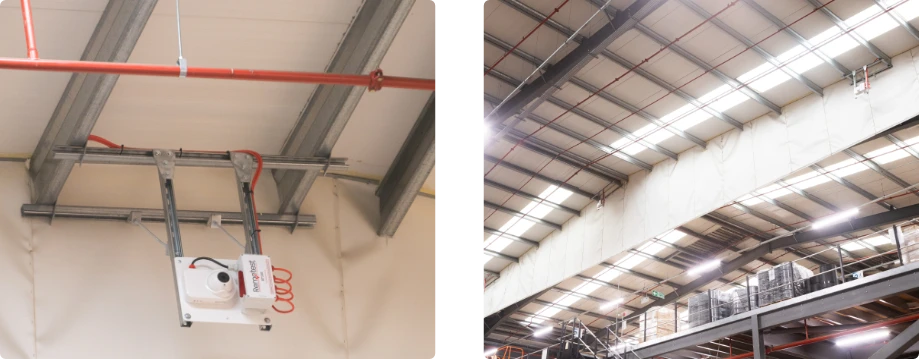

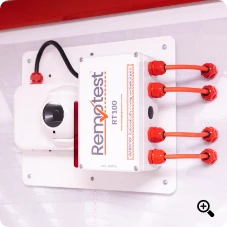
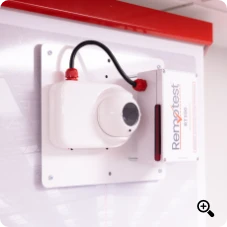
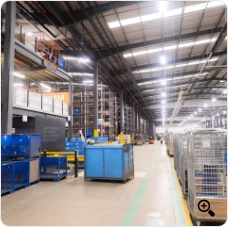

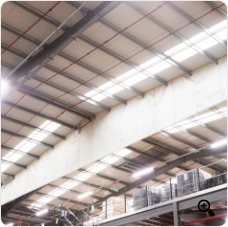

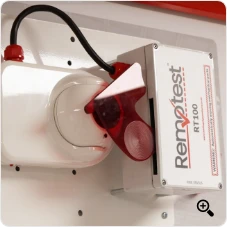

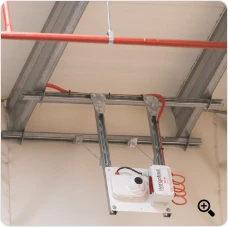







.webp)


























































































.webp)











.webp)





















































.webp)


